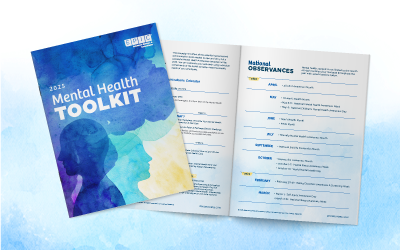Traditionally, middle-market employers have used fully-insured funding arrangements to finance their medical insurance costs while self-insurance or “Administrative Services Only” contracts were relegated to the large employer market.
Due to rising costs and a lack of transparency of insured arrangements, smaller employers have begun to evaluate self-insurance as an option for controlling costs. This funding mechanism has become much more accepted as the purchase decision now includes the top financial executive level, and vehicles such as lifestyle-based contribution models have become mainstream, allowing the full impact of these strategies to fall directly to the organization’s bottom line.
Self-insuring is a method to fund employee benefits where the employer pays the insurer an administration fee to process claims and use their provider network to access discounts. However, self-insurance does not mean unlimited liability. To protect against catastrophic loss, the employer purchases stop-loss insurance to shelter the employer from large claims on any one plan member as well as for the aggregate claims for the entire group.
Self-insurance is often the best decision for employers with the financial wherewithal to absorb variable claim payment streams. However, the risks must carefully be considered in the context of an organization’s overall risk absorption strategy.
The advantages to an organization that self-insures include:
- Potential for increased cash flow if claim levels run better than projected
- The ability to hold the money needed to fund incurred but unreported claims (IBNR), which is typically 15-20% of paid claims. In the first year of a self-insured plan, this deferred liability provides increased cash flow to the employer during the initial months
- Avoidance of state-mandated benefits. Employers functioning in multiple states or states that have stringent mandated benefits look to self-insurance to avoid these coverage requirements
- Since state mandates are avoided in self-insured plans, multi-state members have uniform benefits regardless of where they live
- Certain elements of the plan such as stop-loss coverage, drug treatment and mental health services can be carved out to specialty vendors
- Lower expense levels since there is no state premium tax (approximately 2%) and the carriers risk charge is removed (typically 3-5%)
- Ongoing renewal negotiations are easier since increases in the administrative fee and other non-claim costs are tied to CPI rather than medical inflation. Note that stop-loss coverage costs do accelerate based upon medical cost trends
- Significantly improved reporting and access to data.
The primary drawbacks of self-insurance include:
- The employer takes on additional risk and down-side should claim levels exceed budgeted levels
Claim funding is typically through a separate bank account on a weekly basis and as a result, there is additional administration - Establishing a self-insured plan requires the employer to sign an Administrative Services Agreement. This is a lengthy document that requires legal review and potential expense
- Under a self-insured plan, the employer becomes the claim fiduciary. However, this is usually transferred to the claims administrator for a small fee
- There is the potential for hidden costs if the employer requires certain types of reporting and Summary Plan Description printing
- Stop-loss coverage, which should be purchased, is complex and can create gaps
Stop-Loss Coverage
Perhaps the most important consideration for self-insurance is the purchase of re-insurance (or “stop-loss”) to cover costs in excess of those expected at the onset of the year. Stop-loss insurance is a contract between the employer and the insurance carrier. It is critically important that the terms of the stop-loss agreement are aligned with the underlying insurance plans or a gap in protection can result.
There are two types of stop-loss insurance coverage: Individual Stop-Loss (“ISL”), that is designed to protect against the risk that any one claimant’s costs will exceed the pre-selected per claimant limit and Aggregate Stop Loss (“ASL”) protection, that limits total claims in a policy year to the expected liability plus a claims margin or retained risk corridor (typically set at 25% of the expected liability amount).
A contract can be written on a pre-funding basis or a fund and refund basis. A pre-funding basis means that once claims exceed the threshold, the insurance carrier steps up and provides funding. A fund and refund requires that the insured pay the claims as presented and seek recovery from the insurer.
Stop-loss providers require information concerning potential high claimants during the initial application period and at renewal. Contracts are rigidly enforced and insurers can require extensive audits when a claim is presented. In a typical stop-loss relationship through a national carrier (e.g.: Aetna, Cigna, UnitedHealthcare) the carrier acts as both the claims administrator and re-insurer for large claims. This mitigates potential disputes and provides a “seamless” reimbursement in the event of a large claim.
Since all plan benefits are now written with unlimited maximum benefits, the ISL and ASL contract limits should also be unlimited to provide coverage alignment. Unlimited ISL is readily available, however, ASL is often quoted with limits as low as $1,000,000 which can cause a significant coverage gap.
Another critical issue in stop-loss placement is the period during which claims are incurred and the period during which they are paid. There is a lag in the time between when services are performed (the incurral date) and the actual payment for these services. This claim lag is typically 2 months, but it has been reduced by auto-adjudication initiatives and capitated case rate arrangements for hospital claims.
More commonly found contracts terms are:
- 12/12 — covers claims that are incurred during the 12 policy months and paid during that period
- 12/15 — covers claims that are incurred during the 12 policy months – but paid during that year and the three months subsequent to the end of the year (referred to as run-out protection)
- Paid — covers claims that are incurred anytime and paid during the policy year.
In the first year of a contract, ISL can be written on an immature (12/12) basis, however, ASL includes run-out protection (12/15). This will result in lower first-year stop-loss costs since there is a lag in the payment of claims resulting in about ten months of claims paid in the first year. This lower cost would be made up in the second policy year when a full twelve months of claims would be paid.
Significant increases and decreases in headcounts impact ASL coverage costs. ASL contracts usually include a provision that sets the overall claims trigger to the monthly claims factor based upon the lives count at the onset of the contract. Therefore, with a significant decline in population, the aggregate attachment point can be much higher than expected. When lives are added during the year, the stop-loss cost is usually not adjusted for the fact that claims for these added lives would be immature.
In underwriting stop-loss insurance, an insurance company will request a large claim disclosure prior to the start of the first and subsequent plan years. This disclosure must be completely accurate since inaccurate or incomplete disclosure can result in claim denial. This is another reason aligning the claims administrator and stop-loss insurer is important.
Perhaps the biggest risk faced is not the year of transition, but subsequent years in which a large claim may be identified at the time of underwriting. Emerging or evolving claims can significantly impact the pricing of a stop-loss renewal. In addition, known claims can be “lasered.” This means that a higher stop-loss threshold may be set or the claim can be excluded altogether.
Stop-loss carriers have been willing to write contracts with second-year rate caps and a no-new-laser provision at renewal. This protects the employer against emerging large claims during the initial policy year. It is important that both the rate cap and no-new-laser provision are obtained together – neither is as valuable alone.
Five Insider Tips to Success in Self-Insurance
- Self-insurance is clearly not for everyone. Middle-market companies should consider establishing reserves using the aggregate attachment factors plus estimated reserves so that they begin to build a cushion against the inevitable bad plan year. Budgeting at the minimum expected cost is a recipe for a bad experience with this type of funding. Smaller companies have greater volatility and therefore need larger cushions against adverse experience.
- Keep plan administration and claims payment bundled at the onset of a self-insured program. Less can go wrong.
- Expect monthly variance in claims payments and budget accordingly. If you cannot bear variability – consider whether self-insurance is right for you. The market has responded to this for middle-market customers by offering level funding products with a fixed monthly payment rate and an annual settlement if there is a surplus at the end of the policy year.
- Review recent FMLA and short-term disability claims for clues to pending large claims.
- The year in which large plan or contribution changes are incorporated is probably not the best year for a switch to self-funding. Changes can result in unpredictable results.
Taking the time to understand self-insurance and the potential issues associated with stop-loss coverage can be a powerful tool in taking back control of this important expense. Working with a qualified advisor to help in evaluating this decision is a great first step in determining whether this risk is one the organization can absorb.
Related Content
Products
Employee Benefits Consulting
Our dedicated benefits team is focused on delivering better outcomes – to both your benefits program and ...
Products
Actuarial
Our Actuarial Team provides guidance on employee benefits and health and welfare programs to help meet ...
Products
Compliance
We provide comprehensive consulting services and in-depth education regarding the ever-changing employee ...



